In the plainest of terms, the Living Vehicle is a luxury camper. But I wouldn’t be doing this towable tiny home justice with such a simple explanation. An extremely robust electrical system and elegant design choices make this travel trailer one of the most unique off-grid living solutions I’ve seen.
The Living Vehicle Replaces Your Sticks and Bricks Home
I said it. The Living Vehicle can replace your traditional home. And honestly, with a price tag starting at $199K (going up to $350K+), you might have to sell your current house to afford one of these. But let’s not get hung up on the price, because for the right person, couple, or even family (it sleeps up to 6 people), the Living Vehicle could be a viable alternative to a traditional home.
On the outside, the Living Vehicle is devoid of the cheesy graphics that usually adorn the sides of travel trailers. It has a classic, polished aluminum exterior like an Airstream, and the interior is elegant, with a clean aesthetic that’s characterized by neutral colors, walnut, glossy-white surfaces, and aluminum/stainless steel appliances and accents. It’s breathtaking, not because of extravagant facades, but because the team at Living Vehicle has distilled the design of this camper home to it’s most potent and functional form.
“We recognize LV is not for everyone, and so we refuse to make compromises to fit the mold. Designed for individuals that value innovation as much as we do, Living Vehicle is handcrafted for the most discerning clientele.”

The Biggest, Baddest solar setup
The 47.66-kilowatt, lithium nickel manganese cobalt battery bank found in the “Pro” Living Vehicle is the star of the show. I can’t explain the chemistry or technical details behind this battery bank, but having been a full-timer myself, I know a thing or two about energy capacity. That 47.66 kilowatts represents a HUGE amount of power, equivalent to approximately 3,400 amp-hours; we’re talking big enough to run multiple air conditioning units, a refrigerator, TV, basically, anything you want.

But the jaw-dropping specs of this solar system don’t stop at the huge battery bank. Referring again to the Pro model, the Living Vehicle is outfitted with 3,080 watts of roof and awning-mounted solar panels. That’s 14 220-watt panels—yes, seriously. This all adds up to a system that, with adequate sunshine, can power everything in the Living Vehicle without ever needing to fire up a generator.
Seamless Aluminum Roof
One other feature that I think deserves special attention is the roof. RV and trailer roofs are notoriously prone to rot and deterioration, but the Living Vehicle is different. By utilizing a single piece of aluminum sheeting, many of the deterioration issues associated with steel and fiberglass panel joints and construction are taken out of the equation. The resulting low-maintenance, worry-free roof over your head is a blessing.
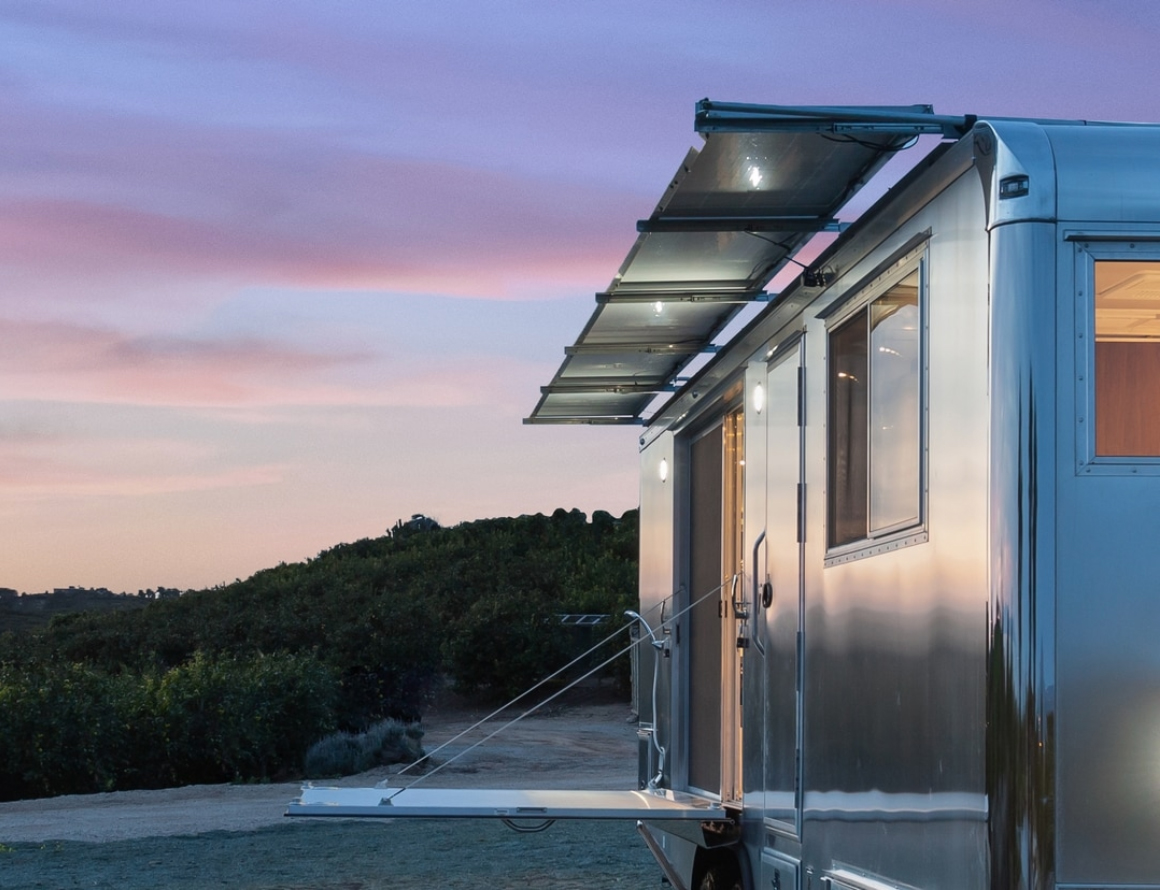
The Tradeoff Between Comfort and Capability
One caveat of mobile living, be it a van, RV, or trailer, is the tradeoff between comfort and capability. The Living Vehicle does a great job of offering both, especially if you upgrade to the off-road package. But ultimately, its limitation is its size. At over 30 feet long and weighing upwards of 13,000 pounds fully loaded, even with the off-road package, you can’t take it everywhere.
But in exchange for its large footprint, you’ll get unmatched amenities that will make you feel right at home. Optional features include a home theater with hi-fi audio, spa bathroom, chef’s kitchen, convertible office, and combo washer/dryer. The list of luxurious additions and upgrades is extensive.
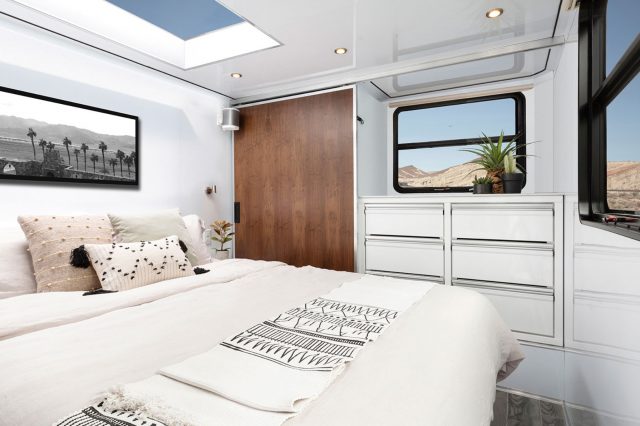
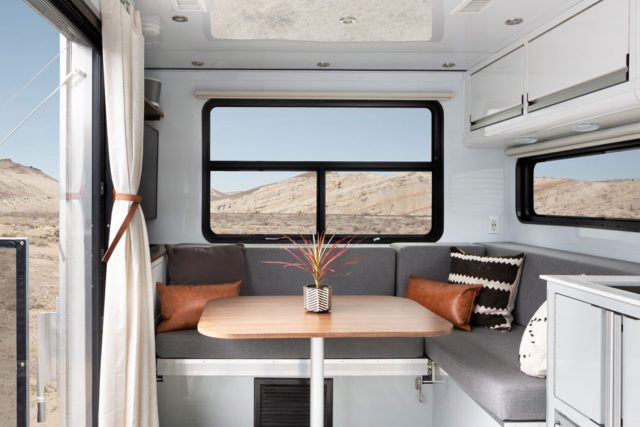
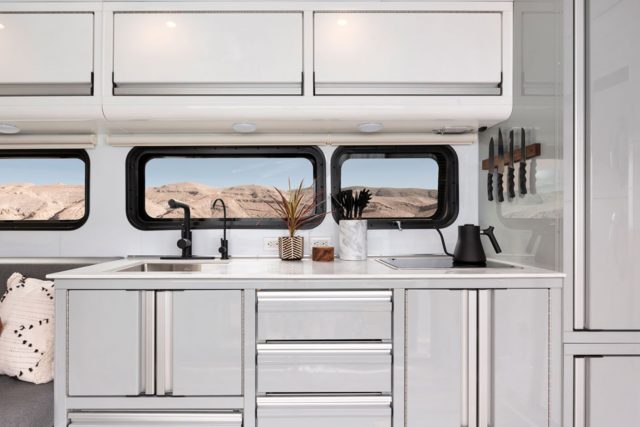
Don’t Buy New, Buy Pre-owned
The Living Vehicle may be spendy, but buying new isn’t the only option. If you want to save a little cash, it’s worth your time to browse the certified pre-owned section of the Living Vehicle website.
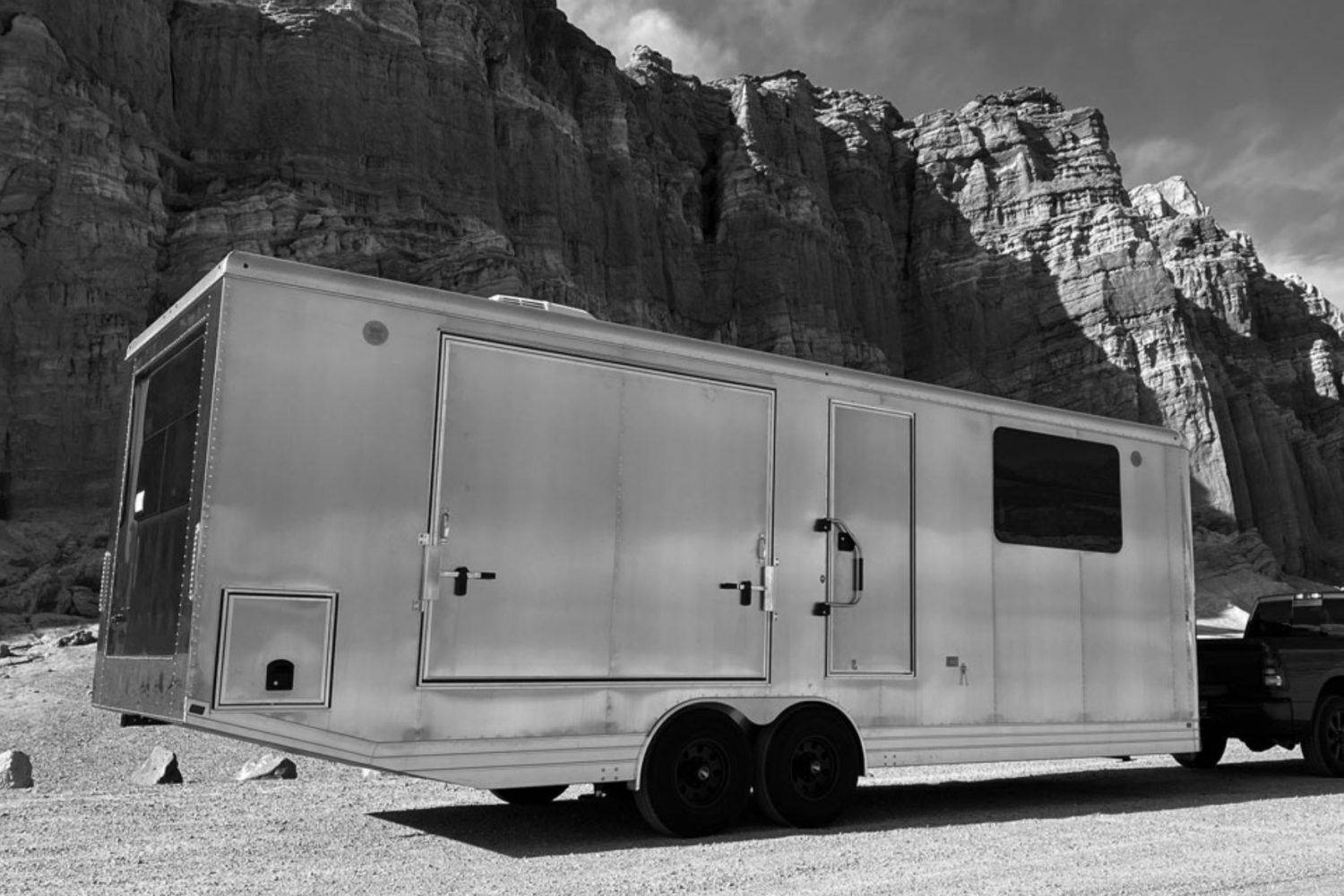
SPECIFICATIONS: 2020 “Core” model
CHASSIS, BODY, SUSPENSION
Aluminum chassis
Heated subfloor (and conditioned “basement”)
5-point auto-leveling
Insulation (closed cell): R-25 ceiling, R-13 walls and floor
Windows: frameless, single-pane (dual pane optional)
2×6000-pound torsion axles (2×7000 pound optional)
Electric drum brakes (4-wheel disc brakes optional)
16-inch aluminum mag wheels (matte black)
HOUSE SYSTEMS
Electrical line-in: 50amps
Concealed propane tanks: 80 pounds
Freshwater tank: 100 gallons
Gray water tank: 62 gallons
Black water tank: 45 gallons
Air Conditioning: 15,000 BTU (additional 15,000 BTU AC unit optional)
Heating: 35,000 BTU floor heat (propane, additional electric heat optional)
Lighting: LED, dimmable
Hot water: tankless, on-demand (propane)
**optional Air and Water Quality upgrade: Air purifier, air quality monitor, water filter, water sterilization
SOLAR
Battery type: lithium nickel manganese cobalt
Battery capacity: 8.7 kilowatts (expandable to 24 kilowatts [Max] or 47.66 [Pro])
Inverter: 3,600-watt pure sine wave AC inverter
Solar panels: Thin film, impact-resistant, ultralight (1,320 watts [Core], expandable to 3,080 watts [Pro])
OTHER
Body length: 29’0”
Total length: 32’8”
Ground clearance:
Exterior height: 11’11” (w/ AC)
Interior height: 6’8”
Body width: 8’6”
Under-skin ground clearance: 16 inches
Departure ground clearance: 20 inches
Est. unit dry-weight: 10,700 pounds
Est. GVWR Maximum trailer capacity: 13,500 pounds
Est. net carrying capacity: 2,800 pounds
*For a full list of features and specifications, visit the Living Vehicle specs page.
If you do take the plunge and invest in a Living Vehicle, just promise me one thing: buy the most secure hitch lock you can find.
For more information: livingvehicle.com

